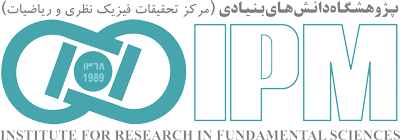“School of Astronomy”
Back to Papers HomeBack to Papers of School of Astronomy
| Paper IPM / Astronomy / 18191 |
|
||||||||||||||||||||
| Abstract: | |||||||||||||||||||||
|
Dusty stellar point sources are a significant stage in stellar evolution and contribute to the metal enrichment of galaxies. These objects can be classified using photometric and spectroscopic observations with color-magnitude diagrams (CMD) and infrared excesses in spectral energy distributions (SED). We employed supervised machine learning spectral classification to categorize dusty stellar sources, including young stellar objects (YSOs) and evolved stars (oxygen- and carbon-rich asymptotic giant branch stars, AGBs), red supergiants (RSGs), and post-AGB (PAGB) stars in the Large and Small Magellanic Clouds, based on spectroscopic labeled data from the Surveying the Agents of Galaxy Evolution (SAGE) project, which used 12 multiwavelength filters and 618 stellar objects. Despite missing values and uncertainties in the SAGE spectral datasets, we achieved accurate classifications. To address small and imbalanced spectral catalogs, we used the Synthetic Minority Oversampling Technique (SMOTE) to generate synthetic data points. Among models applied before and after data augmentation, the Probabilistic Random Forest (PRF), a tuned Random Forest (RF), achieved the highest total accuracy, reaching 89%89% based on recall in categorizing dusty stellar sources. Using SMOTE does not improve the best model's accuracy for the CAGB, PAGB, and RSG classes; it remains 100%100%, 100%100%, and 88%88%, respectively, but shows variations for OAGB and YSO classes. We also collected photometric labeled data similar to the training dataset, classifying them using the top four PRF models with over 87%87% accuracy. Multiwavelength data from several studies were classified using a consensus model integrating four top models to present common labels as final predictions.
Download TeX format |
|||||||||||||||||||||
| back to top | |||||||||||||||||||||



















